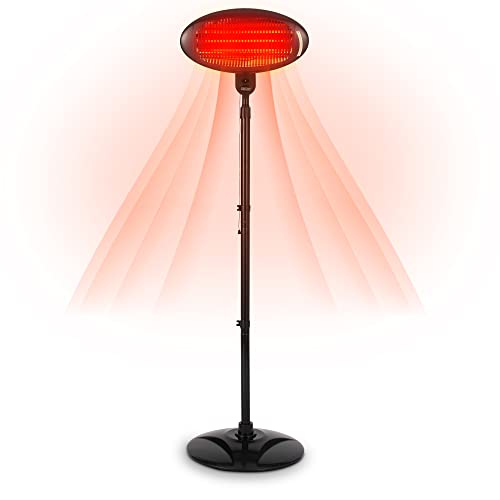How to Choose a Patio Heat Lamp Electric
When it comes to heating your patio, you have several options. Electric heaters are more efficient than propane models which require refueling. They can be heated immediately by pressing a button or flicking a switch.
They don't release any gasses which could pose an health risk. electric heater for outdoor patio have adjustable heat settings to accommodate different distances.
Heater Type
With the appropriate patio heater, you will be able to comfortably enjoy your outdoor living spaces well into the night, and throughout the seasons. There are several types of patio heaters, such as freestanding propane and natural gas models as well as ceiling or wall-mounted electric radiant heaters. The choice you make will depend on the size of the space, the power sources and personal preference.
Most patio heaters are powered by electricity or liquid or natural gas and produce heat through convection and radiant heating. Their heat output is measured in watts and then converted to British thermal units (BTUs) to compare. Certain models come with adjustable temperature settings that give you more flexibility.
A patio heat lamp incorporates a burner on top of a pole with a perforated metal screen that reflect the flames and sends the heat downward to warm furniture, people and other objects. Some models have a reflector atop the burner that can be silvered to cut down the amount of heat emitted upwards.
The most common kind of patio heater is a gas patio heater is usually found in outdoor areas of bars and restaurants since they generate a lot of heat quickly and distribute equally across all directions -- great for warming multiple tables. They can be portable and run off a propane tank or plumbed into your natural gas line with the latter providing more convenience and lower upfront installation costs, but also requiring an ongoing cost of fuel.
Gas patio heaters are becoming increasingly popular as more homes are equipped with natural gas lines. They are simple to install, but they require a gas line that's properly installed and operating to be safe. There are portable natural gas heaters that come with extension hoses that can help overcome this restriction however they could pose a tripping risk and a fire risk when not being used.
Safety
The majority of electric patio heaters are suitable for use in covered areas since they allow heat to radiate outward, instead of upward toward things that ignite, like the roof. However, they're not intended to be used on an open roof. The heater should be set at minimum 18" from adjacent walls or 6" from the ceiling to avoid fire hazards.

Patio heaters made of propane and gas can only be installed in enclosed areas that are fitted with an enduring cover specifically designed for outdoor use. The covers are typically made of fire-resistant fabric and come with a roof that can be closed. These types of patio heaters are prone to safety concerns related to the flames and fumes they produce. They should be placed away from flammable items, such as curtains and chairs.
When installing a patio heat lamp electric or any other type of patio heater, make sure you adhere to the manufacturer's instructions and safety precautions carefully. Make sure you select the one with UL and CSA certifications, and read the owner's manual thoroughly. Be extra cautious when it comes to pets and children, and ensure that the heater isn't within their reach when it's running. Some free-standing patio heating devices like EUROM's include a tipping safety feature that shuts off the device if it falls.
If your patio heater is connected to a natural-gas line, it is recommended to examine it regularly and be sure to have it tested by a licensed professional to identify leaks. If the line has to be replaced, make sure to hire an authorized plumber. A professional will be in a position to determine if the line should be connected to an underground pipe or not. Additionally, a professional can also make sure the heater for your patio is connected into an outlet that is GFCI (ground fault circuit interrupter) certified to guard against electrical shocks and fires.
Installation
The size of the patio heater is placed affects the amount of heat it can radiate into the space. The heater should be positioned away from surfaces like wood and plastic that can deform. It is possible to mount the heater on a structure, wall or any other surface with traditional mounting brackets. Certain models have soft starters that reduces the maximum current to protect your circuits.
